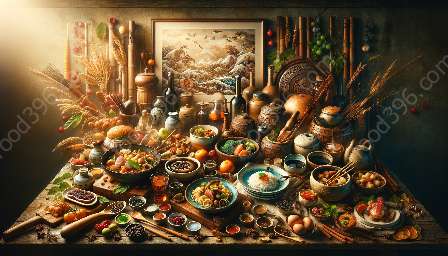Culinary traditions around the world have been shaped by the unique flavors, ingredients, and cooking techniques passed down through generations. One of the most significant developments in the culinary world is the emergence of fusion cuisine, which has impacted and influenced traditional culinary practices and traditions.
Understanding Fusion Cuisine
Fusion cuisine is the blending of different culinary traditions and techniques to create innovative and unique dishes. This culinary movement is characterized by the integration of ingredients and cooking styles from different cultures, resulting in a harmonious fusion of flavors and textures. The roots of fusion cuisine can be traced back to ancient trade routes, where the exchange of goods and culinary practices between different cultures laid the foundation for the diversity we see in modern cuisine.
Fusion Cuisine History
The history of fusion cuisine is deeply intertwined with the history of global trade and cultural exchange. It can be traced back to the Silk Road, which facilitated the trade of spices, ingredients, and cooking techniques between Asia, the Middle East, and Europe. This exchange of culinary knowledge and ingredients led to the integration of diverse flavors and cooking styles, giving birth to early forms of fusion cuisine.
As explorers and traders traveled the world, they brought back new ingredients and culinary techniques, further enriching the culinary traditions of their home countries. This continuous exchange of ingredients and ideas contributed to the evolution of fusion cuisine, creating a tapestry of culinary diversity that continues to influence modern gastronomy.
Evolution of Fusion Cuisine
Over time, fusion cuisine has evolved and adapted to changing cultural landscapes and global culinary trends. The movement towards fusion cuisine gained momentum in the 20th century as chefs and food enthusiasts began exploring new ways to combine flavors and techniques from different culinary traditions.
The fusion of Asian and Latin American flavors in dishes like sushi burritos and Korean barbecue tacos exemplifies the creative and boundary-pushing nature of fusion cuisine. These bold flavor combinations have not only transformed the culinary landscape but have also influenced traditional cooking practices, leading to the incorporation of new ingredients and cooking methods in various cultural cuisines.
Impact on Culinary Traditions
The impact of fusion cuisine on culinary traditions has been profound, as it has challenged traditional boundaries and fostered a spirit of innovation in the culinary world. The integration of diverse ingredients and cooking techniques has led to the reimagining of classic dishes, giving rise to a new wave of culinary creativity and experimentation.
Furthermore, fusion cuisine has transcended geographical and cultural barriers, creating a platform for cross-cultural dialogue and understanding. By embracing and celebrating the diversity of culinary traditions, fusion cuisine has played a pivotal role in promoting cultural exchange and appreciation.
Integration of Flavors and Techniques
One of the defining features of fusion cuisine is the seamless integration of flavors and techniques from different culinary traditions. This amalgamation of diverse elements has not only expanded the flavor profiles of dishes but has also influenced the way traditional ingredients are used.
For instance, the fusion of Indian spices with French cooking techniques has given rise to innovative dishes that marry the aromatic spices of Indian cuisine with the refined artistry of French gastronomy. This integration of flavors and techniques has sparked a renaissance in culinary creativity and has broadened the repertoire of chefs and home cooks alike.
Embracing Cultural Diversity
Fusion cuisine celebrates cultural diversity and encourages culinary exploration without the constraints of traditional categorizations. It provides a platform for chefs to experiment with global ingredients and techniques, resulting in a mosaic of flavors that reflect the richness of culinary traditions from around the world.
Moreover, the acceptance and appreciation of fusion cuisine have paved the way for a more inclusive and interconnected culinary landscape, where traditional boundaries are blurred, and culinary creativity knows no limits.
Future of Fusion Cuisine
As global connectivity continues to expand, the future of fusion cuisine holds infinite possibilities for culinary innovation. The ongoing exchange of culinary knowledge and the evolution of global food trends will further shape the direction of fusion cuisine, giving rise to new and unexpected flavor combinations and culinary experiences.
With the advent of technology and social media, the sharing of culinary ideas and inspirations has become more accessible, fostering a global community of food enthusiasts who continue to push the boundaries of traditional culinary practices through the exploration of fusion cuisine.
In conclusion, the impact of fusion cuisine on culinary traditions has been a catalyst for change and creativity in the culinary world. Its historical context rooted in cultural exchange and trade routes has laid the groundwork for a dynamic and diverse culinary landscape where innovation knows no bounds.

